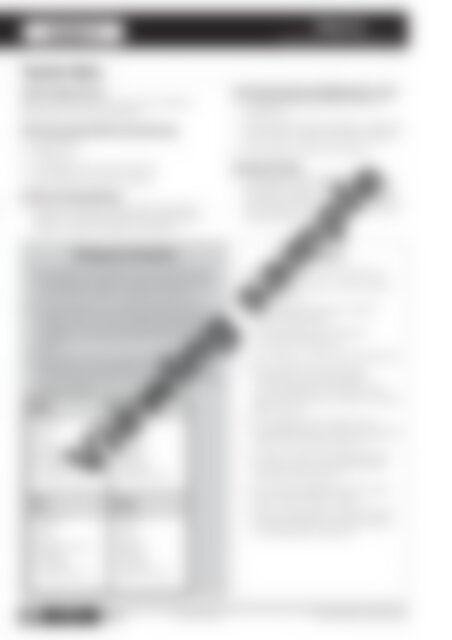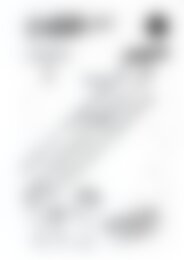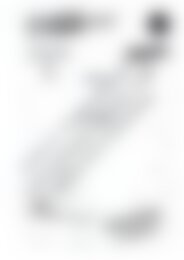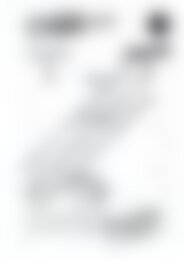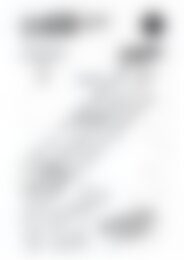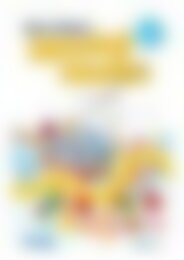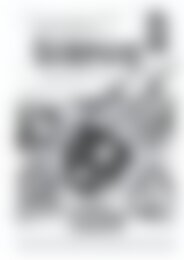PR-6170RUK Science A STEM Approach - Primary 1
Create successful ePaper yourself
Turn your PDF publications into a flip-book with our unique Google optimized e-Paper software.
Lesson 4<br />
Materials<br />
MATERIALS HAVE <strong>PR</strong>OPERTIES<br />
Teacher Notes<br />
<strong>Science</strong> Inquiry Focus:<br />
What do objects that are made from different<br />
fabrics look, smell and feel like?<br />
Skills Development/Working Scientifically:<br />
• Questioning<br />
• Observing<br />
• Investigating and experimenting<br />
• Recording and communicating<br />
<strong>Science</strong> Learning Outcome:<br />
• Pupils use their five senses while observing<br />
objects to investigate the basic properties of<br />
objects made from different materials.<br />
Background Information<br />
• All objects are made from materials that have<br />
observable properties. These properties make<br />
the material useful for different purposes.<br />
• The properties of a material describe its size,<br />
shape, colour, texture, malleability, flexibility,<br />
strength, odour, sound, density, absorbancy or<br />
transparency. See pages 80 and 81 for more<br />
detail.<br />
• Materials may have opposing properties<br />
depending on the object; for example, natural<br />
wool may smell like lanolin but treated wool may<br />
have no smell.<br />
Wool<br />
• strong<br />
• soft<br />
• dull<br />
• rough/smooth<br />
• flexible<br />
• coloured<br />
• smell/no smell<br />
Felt<br />
• strong<br />
• soft<br />
• dull<br />
• rough/smooth<br />
• flexible<br />
• coloured<br />
• smell/no smell<br />
Silk<br />
• strong<br />
• soft<br />
• shiny<br />
• smooth<br />
• flexible<br />
• coloured<br />
• smell/no smell<br />
Cotton<br />
• strong<br />
• soft<br />
• shiny<br />
• smooth<br />
• flexible<br />
• coloured<br />
• smell/no smell<br />
Technology/Engineering/Mathematics Links:<br />
• Sorting objects by the fabric they are<br />
made from.<br />
• Using mathematical language to describe<br />
the thickness, weight and size of objects.<br />
• Exploring properties of materials.<br />
Assessment Focus:<br />
• Use page 86 or 87 monitor the pupil's<br />
observation skills while they explore the<br />
properties of fabric, including the pupil's<br />
use of descriptive words and use of sight,<br />
smell and feel.<br />
Resources<br />
• One digital camera for teacher use<br />
• One woollen scarf or similar woollen<br />
clothing item<br />
• One cotton pillowcase or similar<br />
cotton bedding item<br />
• One felt board with characters<br />
or similar felt-based toy<br />
• One silk tie or similar silk clothing item<br />
• One container for each group<br />
containing: a ball of wool/yarn,<br />
a 10-cm length of silk ribbon, a felt<br />
square (10 cm 2 ) and a square of cotton<br />
fabric (10 cm 2 )<br />
• An enlarged set of coloured and<br />
laminated property cards on pages 80<br />
and 81 (re-use from Lesson 2)<br />
• Five sets of coloured and laminated<br />
property cards on pages 80 and 81<br />
(re-use from Lesson 2)<br />
• One copy of page 86 or 87 for each<br />
group, depending on ability<br />
• Online image—Which of these things<br />
are made of fabric? at (optional)<br />
Viewing sample<br />
84 <strong>Science</strong>:<br />
A <strong>STEM</strong> AP<strong>PR</strong>OACH<br />
Infants 978-1-912760-14-5 Prim-Ed Publishing – www.prim-ed.com


